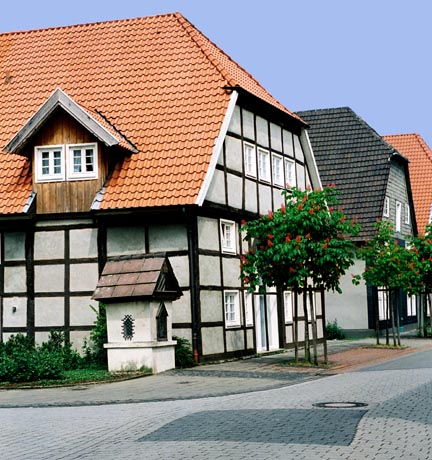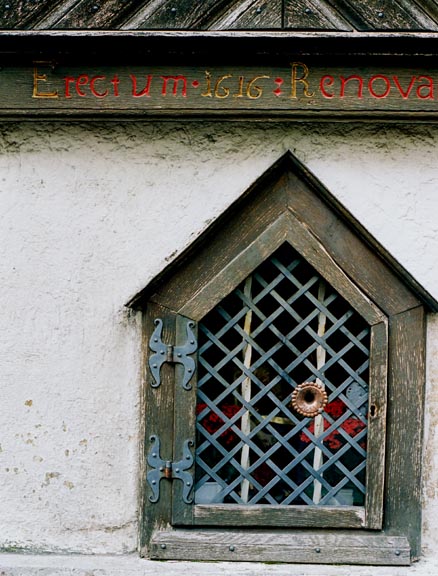Pieta Shrine in Geseke, Germany    Geseke is a town where history is kept alive by festivals and annual processions in honor of important events that took place there. One of these historical events was an incident in 1633 during the Thirty Years War when an enemy soldier from the state of Hesse fired a bullet at the Pieta (statue of the Virgin Mary) in its shrine on the Hellweg; the legend is that after this horrible crime, he died in a fit of madness. You can still see the bullet hole in the tiny house which held the statue, which is shown in the photo above. The statue itself was moved long ago to the St. Cyriakus church for safety. Every year the citizens of Geseke commemorate this event with a procession called "Maria Schuss" which in English means "Shooting of the Virgin Mary." Another annual procession takes place on the third Sunday after Easter to commemorate the time when Geseke held out during a ten-day siege of the town by the army of Christian von Braunschweig in April 1622 during the Thirty Years War.  Geseke has the distinction of being the only town in Westphalia which was not conquered in 1622. The town was besieged for ten days in April 1622, but managed to hold out. The leader of Geseke's defense was Col. Dietrich Othmar von Erwitte. Othmarstrasse in Geseke is named after him and there is a memorial stone in his memory, which is shown in the photo above. But Geseke couldn't hold out forever, and in 1633 the town was conquered by Count Wilhelm von Hesse after an eight-day siege during which the Pieta was shot by the Hessian soldier. The devastating Thirty Years War started in 1618 and ended in 1648 when the Protestants finally defeated the Catholics; the treaty that ended the war is known as the "Peace of Westphalia." As a result of this war, there were so many men killed that some states, such as Bavaria, allowed men to have more than one wife. Back to Historic Buildings indexHomeThis page was created on May 26, 2008 |